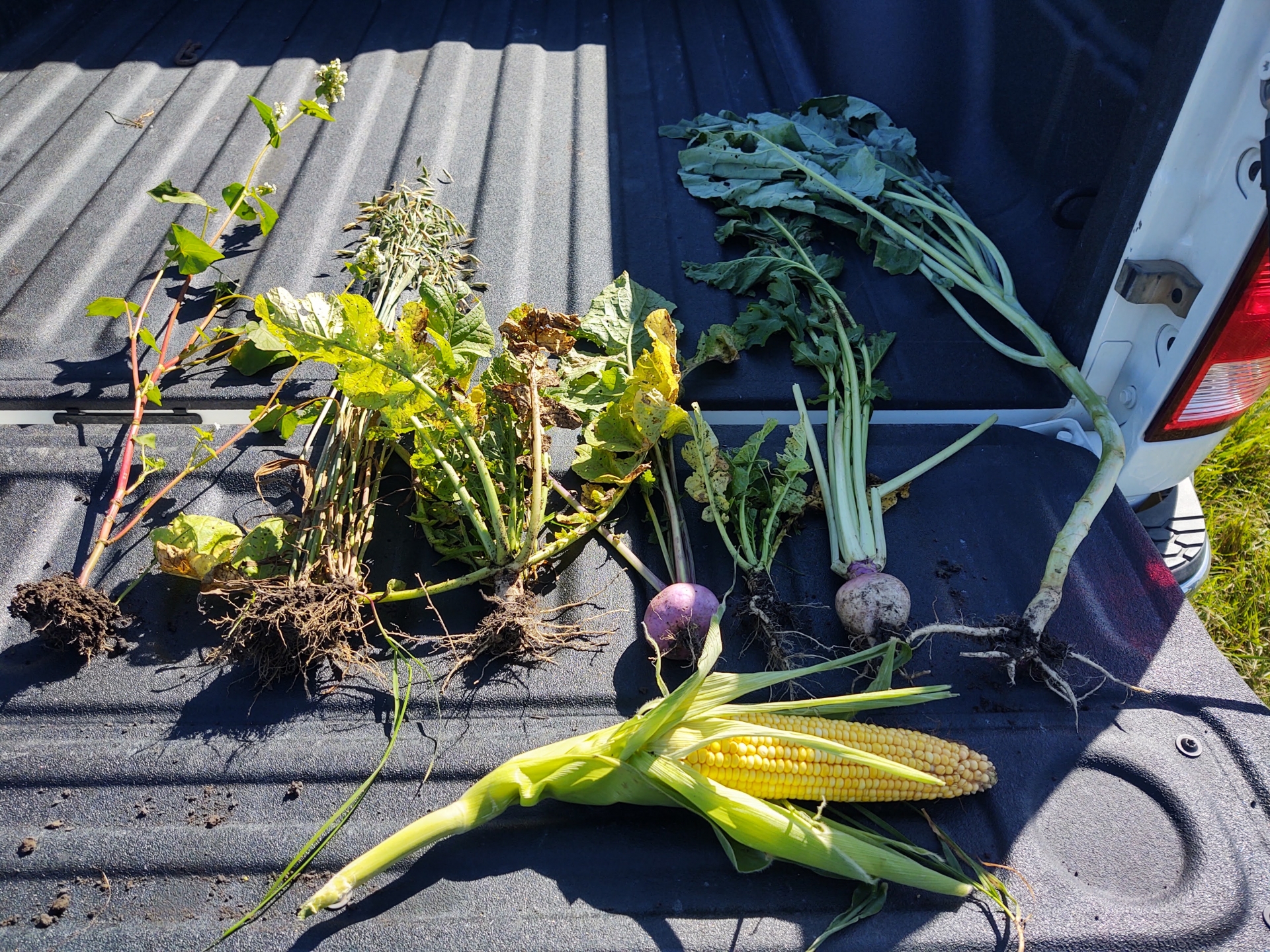Diverse crop rotations provide more biodiversity, benefiting the soil food web.  This, in turn, improves rainfall infiltration and nutrient cycling, while reducing disease and pests. Crop rotations can also be designed to include crops that are high water users; low water users; tap root; fibrous root; high-carbon crops; low-carbon crops; legumes; and non-legumes, to name a few.
This, in turn, improves rainfall infiltration and nutrient cycling, while reducing disease and pests. Crop rotations can also be designed to include crops that are high water users; low water users; tap root; fibrous root; high-carbon crops; low-carbon crops; legumes; and non-legumes, to name a few.
The following lists the four crop types with a few common crop examples of each:
- Warm season grass: Corn, sudan and millet
- Warm season broadleaf: Sunflower and soybean
- Cool season grass: Wheat, oat, barley and rye
- Cool season broadleaf: Flax, pea and lentil
Diverse crop rotations include all four crop types and mimic our original plant diversity landscapes. They are important to the long-term sustainability of our soil resource and food security.
LINKS
Documents:
NGPRL - Cover Crop Chart and ID
MCCC - Integrating Cover Crops in Soybean Rotations
SARE - Cover Crops at Work: for Sustainable Crop Rotations
SARE - Cover Crops at Work: Impacts on Pollinators
SARE - Cover Crops at Work: Effects on Songbirds and Gamebirds
SARE - Cover Crops at Work: Effects on Deer and other Mammals

